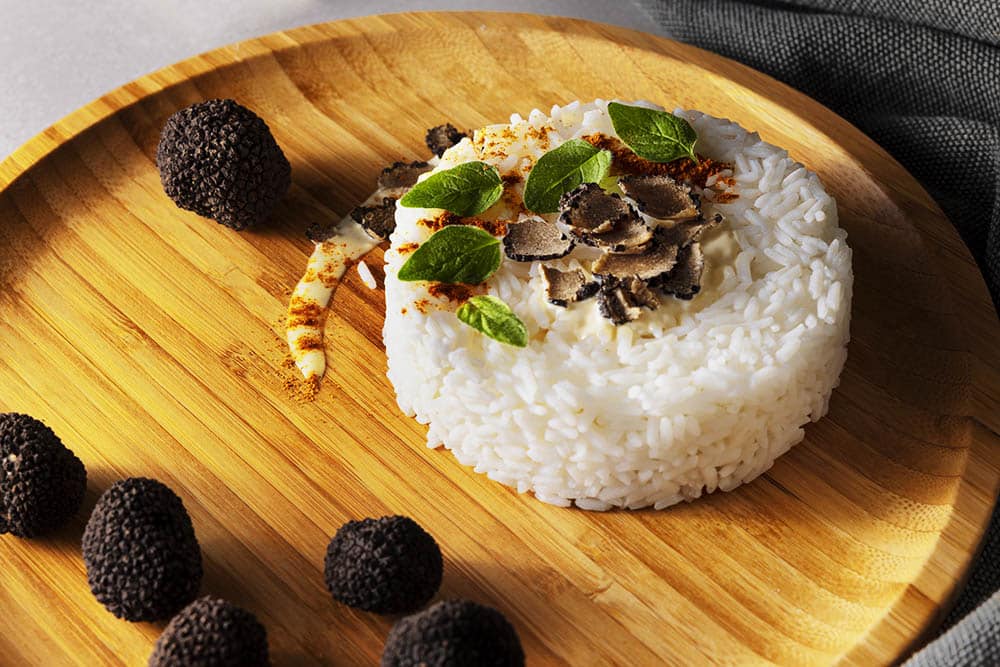When it comes to traditional Spanish cuisine, paella is undoubtedly one of the most celebrated dishes. What makes paella incredibly special is not just its unique combination of ingredients, but also the type of rice used to create this flavorful dish. Each bite of paella is a burst of aromatic flavors and textures, which can only be accomplished through the use of high-quality rice.
If you’re a fan of this classic Spanish dish, or simply want to learn more about the different types of rice used in paellas, then this article is for you! Here, we’ll explore the various varieties of rice used in paellas and offer tips on how to choose the right one to create the perfect paella.
Types of Rice Used in Paellas
Before diving into the details, it’s important to understand that not all rice is created equal. When it comes to paella, the type of rice used plays a crucial role in achieving the perfect texture and flavor. Here are the most common types of rice used in paellas:
Bomba Rice:
Bomba rice is considered the «gold standard» when it comes to paella. This variety of rice is native to Spain and has been used in paella for centuries. Bomba rice is known for its ability to absorb up to twice its volume in liquid. This means that when cooking paella, the rice will absorb the delicious flavors of the broth, resulting in a flavorful and aromatic dish. Its unique texture and flavor profile also ensure that each grain stays separate and does not stick together.
Calasparra Rice:
Calasparra rice is another popular variety used in paellas. This rice is grown in the Murcia region of Spain and is similar to Bomba rice in terms of texture and flavor. However, it is slightly less absorbent, meaning it requires slightly less liquid when cooking.
Arborio Rice:
Arborio rice is an Italian variety of rice that can also be used in paella. While not traditionally used in Spanish cuisine, Arborio rice is a popular alternative for those who may not have access to Bomba or Calasparra rice. Arborio rice is known for its high starch content, which creates a creamy texture when cooked. However, it is important to note that using Arborio rice will result in a slightly different texture and flavor profile than traditional Spanish paella.
Choosing the Right Rice for Your Paella
When it comes to choosing the right rice for your paella, there are a few important factors to consider:
Texture:
The texture of the rice is crucial in creating the perfect paella. The rice should be firm and not mushy, with each grain being separate and distinct. Bomba and Calasparra rice are known for their ability to maintain their texture when cooked, making them the ideal choice for paella.
Absorption:
The rice used in paella should be absorbent enough to soak up the delicious flavors of the broth, without becoming mushy or overcooked. Bomba rice is considered the most absorbent, making it the ideal choice for paella.
Flavor:
The rice used in paella should have a neutral flavor profile, allowing the flavors of the broth and other ingredients to shine through. Bomba and Calasparra rice have a subtle nutty flavor that complements the other ingredients in paella perfectly.
Cooking Tips for Perfect Paella Rice
Cooking the rice for paella can be a bit tricky, but with these tips, you’ll be able to achieve perfectly cooked rice every time:
Use a Wide, Shallow Pan:
The pan used to cook paella should be wide and shallow, allowing the rice to cook evenly and quickly. A pan with a diameter of 13-15 inches is ideal.
Avoid Stirring:
Unlike risotto, paella should not be stirred while cooking. This is because stirring can break up the grains and create a mushy texture. Instead, allow the rice to cook undisturbed, and simply shake the pan occasionally to redistribute the ingredients.
Use the Right Amount of Liquid:
The amount of liquid used in paella is crucial to achieving the perfect texture and flavor. As a general rule, the ratio of liquid to rice should be around 2:1. However, this can vary depending on the type of rice used, so be sure to follow the instructions on the package.
Let It Rest:
Once the paella is cooked, it’s important to let it rest for a few minutes before serving. This allows the flavors to meld together and the rice to absorb any excess liquid.
Conclusion
In conclusion, the key to creating the perfect paella lies in the type of rice used. Bomba and Calasparra rice are the best options for achieving the ideal texture and flavor, but Arborio rice can also be used as a substitute. When cooking paella, it’s important to consider the texture, absorption and flavor of the rice, as well as following some basic cooking tips, such as using a wide, shallow pan and avoiding stirring. With these tips in mind, you’ll be able to unlock the delicious world of paella and impress your friends and family with this classic Spanish dish.

Deja una respuesta